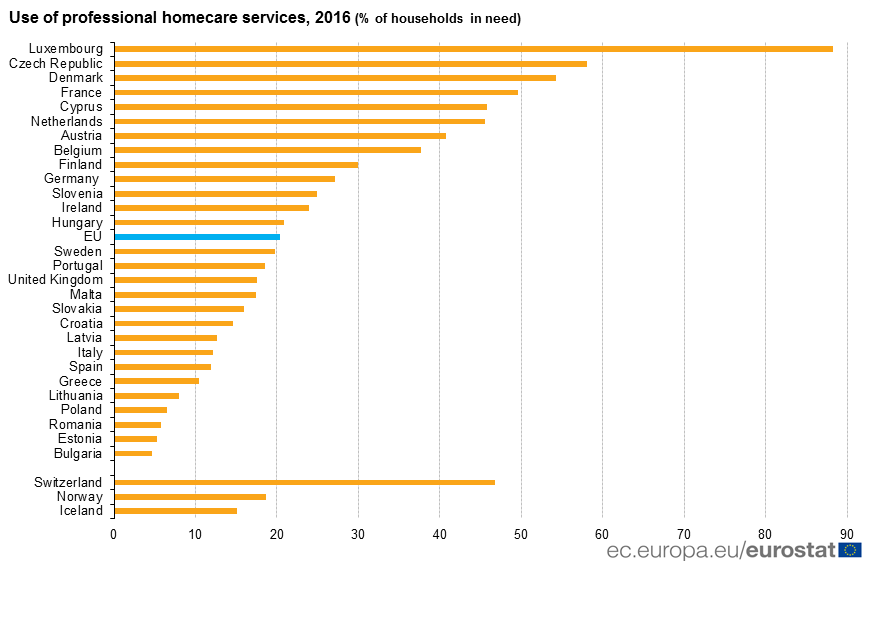In 2016, 20% of households in the EU with people needing help due to long-term health problems used professional homecare services. Home care aims to allow people to stay in their homes rather than use residential, long-term, or institutional-based nursing care. It may include health care and/or life assistance. Home health care could include, for example, medical treatment, wound care, pain management and therapy. Life assistance includes help with daily tasks such as meal preparation, medication reminders, laundry, light housekeeping, shopping, transportation, and companionship. The highest shares of households which used professional homecare were recorded in Luxembourg (88%), the Czech Republic (58%) and Denmark (54%), and the lowest shares in Bulgaria (5%) and Estonia (both 5%) as well as Romania (6%).
The source dataset is available here.
Overall in the EU, households without dependent children tend to use more professional homecare services (25%) than households with dependent children (12%). Also, the use of these services is higher among single persons (41%) than households with two adults (23%) or more (16%).
As to the frequency of use, 67% of households in need reported using professional homecare services for less than 10 hours a week, while 15% used between 10 to 19 hours per week and another 17% 20 hours per week or more.
The source dataset is available here.
In 2016, over 80% of households in ten Member States reported difficulty in covering the costs of professional homecare services, in particular in Slovakia (95%), Lithuania (94%) and Greece (93%). In contrast, the highest shares of households which could pay for these services with ease were found in Finland (75%), Sweden (73%) and Denmark (69%). For the purposes of this article, the category ˈwith easeˈ includes the subcategories "fairly easily", "easily", or "very easily", whilst the category ˈwith difficulty' includes the subcategories "with some difficulty", "with difficulty", or "with great difficulty".
For more information
Eurostat website section on income, social inclusion and living conditions
Eurostat database on income and living conditions
Eurostat news release on access to services
For more information, please contact us: estat-user-support@ec.europa.eu.



